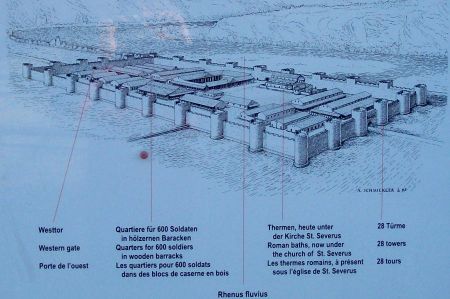Strasbourg – In the footsteps of the Romans
- Written by Portal Editor
During our stay in Strasbourg, we had already collected some information about the Roman era of Strasbourg due to the visit to the Palais Rohan Museum.
We have already reported that the Roman general Drusus first set up a military outpost here on the Illinsel in 12 BC, which was given the name Argentoranum, which translates as "silver castle". In the immediate vicinity there was already a settlement of Belgian Gauls, also called Belgen, who were heavily interspersed with Germanic tribes and settled between the Seine and Marne and the Rhine.
Gallic Wars by Julius Caesar
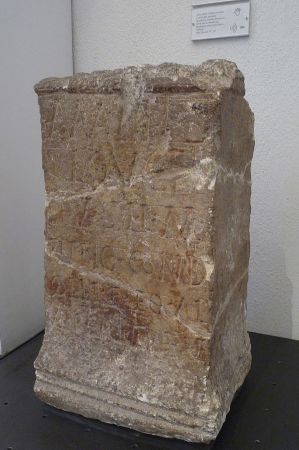 The term Gauls was used at the time as a general term for the Celtic tribes on the territory of Gaul, which roughly corresponds to modern-day France, Belgium and the Swiss Mittelland.
The term Gauls was used at the time as a general term for the Celtic tribes on the territory of Gaul, which roughly corresponds to modern-day France, Belgium and the Swiss Mittelland.
Thus after the campaigns during the so-called Gallic War by Julius Caesar (from 58 - 51 BC) were the groups of Gauls reassigned to their settlement areas.
Thus, the Romans distinguished between Aquitanian Gauls (who belonged more to the Basque group than to those of the Celts), who inhabited roughly the region between the Pyrenees and the Garonne, and the Celtic Gauls or Celts between the Garonne and the Seine - Marne as well the documents already mentioned.
The definition of these two axes
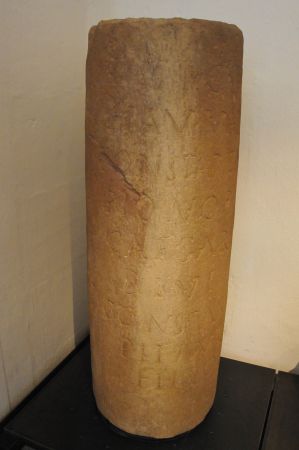 The centre of the military camp was on the Illinsel, where the centre of Strasbourg is still located today. Almost without exception, all Roman camps are laid out on a main axis, which usually points in a north-south direction. The Romans themselves called this complex "Cardo", from which the orientation of the city resulted with the further development of the Roman camp into a city. The east-west direction was also defined as an axis perpendicular to this main axis, which was designated Decumanus. The centre of the camp or later city was therefore at the crossing point (locus gromae) of these two axes.
The centre of the military camp was on the Illinsel, where the centre of Strasbourg is still located today. Almost without exception, all Roman camps are laid out on a main axis, which usually points in a north-south direction. The Romans themselves called this complex "Cardo", from which the orientation of the city resulted with the further development of the Roman camp into a city. The east-west direction was also defined as an axis perpendicular to this main axis, which was designated Decumanus. The centre of the camp or later city was therefore at the crossing point (locus gromae) of these two axes.
The determination of these two axes was something like a divine act, so that a priest was usually present at all times. Even the Romans had a kind of “leveling device” that enabled them to precisely determine the cardinal points. We have already reported about this device, called Groma. The secondary axes were then laid out for the two main axes "cardo maximus" and "decumus maximus", resulting in chessboard-like city plans that are still easily recognizable in excavations today. Since the Romans always first created the infrastructure in the form of fresh water supply and gray water disposal, the chessboard-like pattern in the location overlooking the surrounding area always had a double meaning. Even today in Strasbourg, the “cardo maximus” can be seen in the rue du Dôme and the “decumus maximus” in the rue des Hallebardes.
Affected by major fires six times
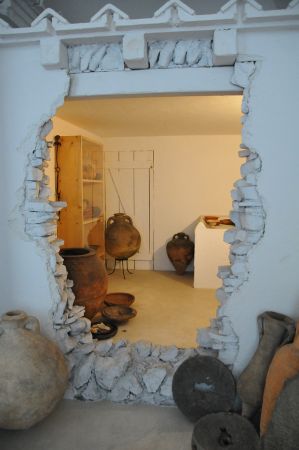 Excavations could only be carried out on a larger scale in Strasbourg due to the severe destruction during the Second World War, which first documented the presence of the military camp and, due to the further excavations then carried out systematically in the years 1947 to 1953, revealed further details of the Roman history of Strasbourg.
Excavations could only be carried out on a larger scale in Strasbourg due to the severe destruction during the Second World War, which first documented the presence of the military camp and, due to the further excavations then carried out systematically in the years 1947 to 1953, revealed further details of the Roman history of Strasbourg.
Here it was particularly the excavations of Prof. Jean-Jacques Hatt, who also exactly document the evidence of the various major fires in the years 70, 97, 235, 355 as well as in the last quarter of the 4th century and in the first years of the 5th century could.
Altogether, the Argentoranum military camp, which had long since developed into a city, was hit by major fires six times and rebuilt six times.
Under the rule of the Roman Emperor Trajan and after the devastating fire of the year 97 AD, Argentoranum had reached its greatest extent and with it the strongest fortifications, which had long since developed from wooden palisades to stone fortifications.
Road from Augusta Vindelicorum to Argentoratum
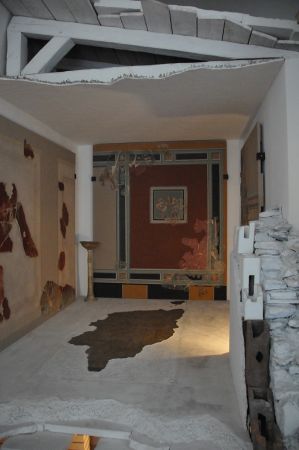 With the increasing expansion of the military camp, under the command of Gnaeus Pinarius Cornelius Clemens, the Legio VIII Augusta built a road from Augusta Vindelicorum (Augsburg) to Argentoranum (Strasbourg) in 74, which is now known as the "Kinzigtalstraße". Another road was created with the connection to the Rheintalstraße to Mobontiacum (Mainz). Numerous archaeological remains of the Roman settlement were found on the Roman road, now known as the Route des Romains, especially in the western district of Kœnigshoffen. From the numerous finds, one concludes today that this was probably the most densely populated place of the civilian population of the camp, which is also proven by the extensive necropolises. A researching predecessor of Hatt by the name of Robert Forrer had already dug in Kœnigshoffen in the years 1911-12 and uncovered numerous fragments of a large-scale mithraeum. It probably came from pre-Christian times and was then destroyed by the emerging Christians. Remains of the Mithraeum are in the Archaeological Museum of Strasbourg.
With the increasing expansion of the military camp, under the command of Gnaeus Pinarius Cornelius Clemens, the Legio VIII Augusta built a road from Augusta Vindelicorum (Augsburg) to Argentoranum (Strasbourg) in 74, which is now known as the "Kinzigtalstraße". Another road was created with the connection to the Rheintalstraße to Mobontiacum (Mainz). Numerous archaeological remains of the Roman settlement were found on the Roman road, now known as the Route des Romains, especially in the western district of Kœnigshoffen. From the numerous finds, one concludes today that this was probably the most densely populated place of the civilian population of the camp, which is also proven by the extensive necropolises. A researching predecessor of Hatt by the name of Robert Forrer had already dug in Kœnigshoffen in the years 1911-12 and uncovered numerous fragments of a large-scale mithraeum. It probably came from pre-Christian times and was then destroyed by the emerging Christians. Remains of the Mithraeum are in the Archaeological Museum of Strasbourg.
From about 90 AD, the Legio VIII was permanently stationed in Strasbourg. As already mentioned, after the major fire, it was rebuilt to an unprecedented size of around 20 hectares. In addition to the actual Legio VIII, a cavalry detachment was housed in the Argentoranum camp, temporarily also the Legio XIV Gemina and the Legio XXI Rapax, which was under the leadership of Nero.
Please read as well:
Excavation and Conservation Works in Stobi, Macedonia
Aventicum - Amphitheatre and Roman Theatre awaiting us
-
 Strasbourg - Roman Museum
Strasbourg - Roman Museum
Strasbourg - Roman Museum
Strasbourg - Roman Museum
-
 Strasbourg - Roman Museum
Strasbourg - Roman Museum
Strasbourg - Roman Museum
Strasbourg - Roman Museum
-
 Strasbourg - Roman Museum
Strasbourg - Roman Museum
Strasbourg - Roman Museum
Strasbourg - Roman Museum
-
 Strasbourg - Roman Museum
Strasbourg - Roman Museum
Strasbourg - Roman Museum
Strasbourg - Roman Museum
-
 Strasbourg - Roman Museum
Strasbourg - Roman Museum
Strasbourg - Roman Museum
Strasbourg - Roman Museum
-
 Strasbourg - Roman Museum
Strasbourg - Roman Museum
Strasbourg - Roman Museum
Strasbourg - Roman Museum
https://www.alaturka.info/en/roman-road-project/5787-strasbourg-in-the-footsteps-of-the-romans#sigProId3ac15fe7d3
